 Sleep Apnea: Top 10 Natural Solutions & Causes
Sleep Apnea: Top 10 Natural Solutions & Causes
Are you waking in the morning feeling tired and unrefreshed even after a full night’s sleep? Do you wake up frequently at night feeling out of breath? If the answer is yes, it is important to determine if a serious condition called sleep apnea is interfering with your sleep.
Sleep apnea is a common condition in which a person’s breathing is interrupted or paused during their sleep and often preceded by heavy snoring. It is most common in men and older people. This condition is linked to obesity, heart disease, stroke, diabetes, depression, and other health conditions.
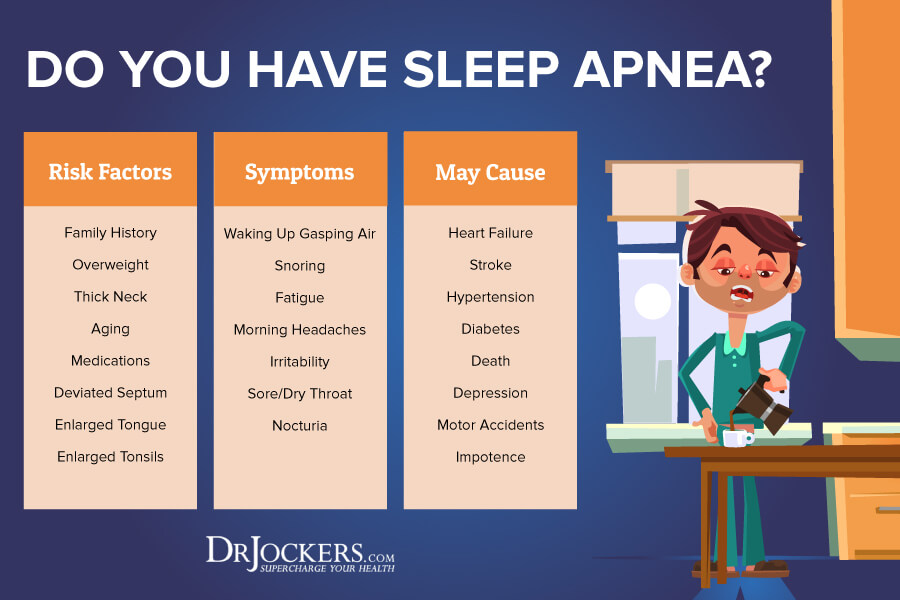
Types & Symptoms of Sleep Apnea
There are three types of sleep apnea, obstructive, central, and complex. Obstructive sleep apnea is the most common type and is cause by a blockage in the airway. With central sleep apnea, the airway is not blocked but the brain does not signal the muscles to breathe. Complex or combined sleep apnea is a combination of obstructive and central types.
Symptoms of sleep apnea include severe snoring, excessive daytime fatigue or sleepiness, morning headaches, waking with a dry mouth, irritability, difficulty concentrating, low energy, and unrefreshing sleep (you wake in the morning not feeling rested). Complications include high blood pressure, type 2 diabetes, metabolic syndrome, liver problems, and complications with medications or surgery.

What is Sleep Apnea?
Sleep apnea comes from the Greek word “apnea” means “without breath”. It is a serious condition in which a person’s breathing stops and starts during sleep (1). This condition is very common, affecting more than 18 million Americans (2).
There are three main types: obstructive, central, and complex sleep apnea syndrome. It can be difficult to determine which type you have because the symptoms for obstructive and central sleep apnea overlap.
Obstructive Sleep Apnea (OSA) is the most common form, affecting 3-7% of the population (3).
With obstructive sleep apnea, breathing stops because the throat muscles relax and the airway narrows as you sleep. The person struggles to breathe but cannot inhale effectively because his or her airway has collapsed.
Central sleep apnea occurs when your brain does not send proper signaling to the muscles that control breathing. In other words, your brain does not tell your muscles to breathe. People with central sleep apnea periodically do not breathe at all, or breathe so shallowly that oxygen intake is ineffectual.
Complex sleep apnea is a combination of obstructive and central types. This type is often referred to as treatment-emergent central sleep apnea.
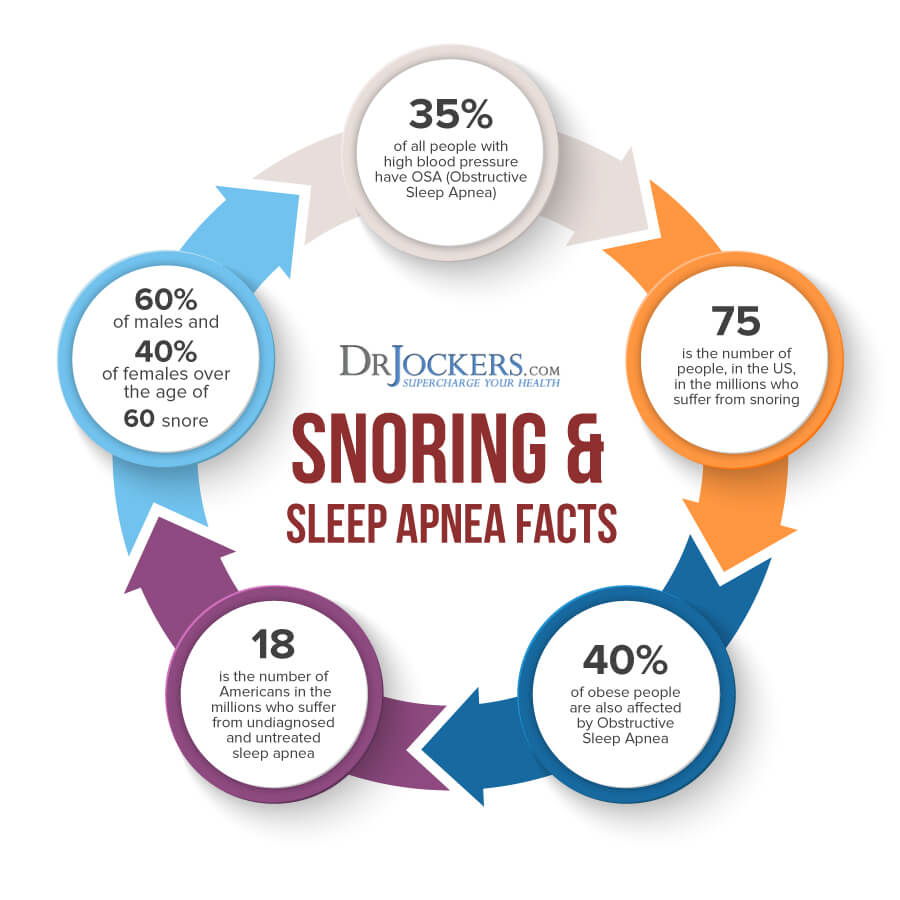
Causes of Sleep Apnea
There are several factors that can cause or contribute to sleep apnea, depending on the type. Two factors common to both types are being male and being older. Sleep apnea occurs around three times more in men than in women, and significantly more in older adults.
Central Sleep Apnea
Central sleep apnea is usually associated with a serious illness, especially an illness or injury in which the lower brainstem (which controls breathing) is affected (4). Risk factors include being 65 or older and being male. Other risk factors include having congestive heart failure, having had a stroke, neurological diseases such as Parkinson’s, kidney failure, and using narcotic pain medications.
Obstructive Sleep Apnea
Risk factors for obstructive sleep apnea are mostly due to the narrowing of the airway. Excess weight greatly increases your risk because the fat deposits around your throat and neck can obstruct your breathing. Having a larger, thick neck is linked to narrower airways.
A narrowed airway can also be due to enlarged tonsils or adenoids. Nasal congestion from seasonal allergies or can cause difficulty breathing. This increases your likelihood of developing sleep apnea. There is a close association between obstructive sleep apnea and asthma (5).
Using alcohol, sedatives, or tranquilizers relaxes the muscles in your throat which can worsen OSA. Smoking can also cause or worsen this condition. Heavy smoking is associated with severe OSA (6). Smoking increases inflammation and fluid retention in the upper airway.

Symptoms of Sleep Apnea
Unless you have a partner who notices that you stop breathing during sleep or you record yourself during sleep, you may not know if you have sleep apnea. So, it is important to pay attention to the following signs and symptoms.
One of the main symptoms is loud or severe snoring. Gasping for air or choking during sleep are also common. You may awaken out of breath during the night. Usually people with sleep apnea have difficulty staying asleep and wake up in the morning not feeling rested (unrefreshing sleep).
Waking up with a dry mouth or headache are common signs as well. Sleep apnea also impacts your daytime function so you may notice excessive daytime sleepiness and difficulty with concentration or attention.
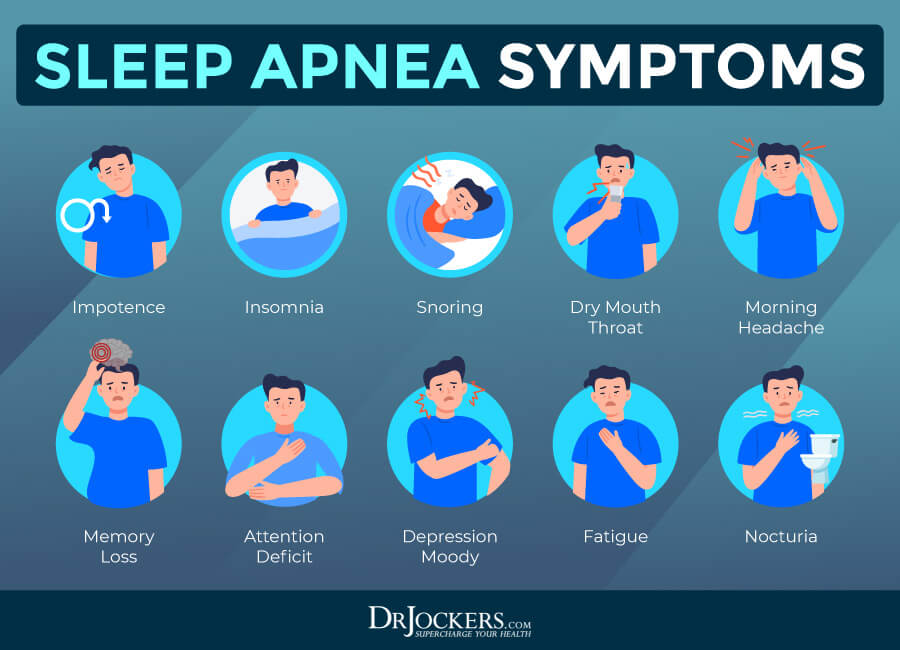
Complications of Sleep Apnea
Sleep apnea is a serious condition with numerous potential complications (1). It is linked to severe daytime fatigue, high blood pressure, type 2 diabetes, metabolic syndrome, liver problems, and increased complications with medications and surgery.
Sleep disordered breathing (including sleep apnea) has even been linked to an increased risk of cancer (7).

Daytime fatigue
Severe daytime fatigue is common with sleep apnea. Repeatedly waking during the night results in unrefreshing, nonrestorative sleep.
You may also have trouble concentrating and irritability which can affect your productivity and relationships. These affects can put you at a higher risk of a motor vehicle accident. Your partner may also be sleep deprived due to the loud snoring.
High Blood Pressure or Heart Problems
When you have sleep apnea, there are sudden drops in blood oxygen levels while you are sleeping.
This strain on the cardiovascular system increases your risk of high blood pressure. It may increase your risk of heart attack, stroke, and irregular heartbeats (atrial fibrillation).
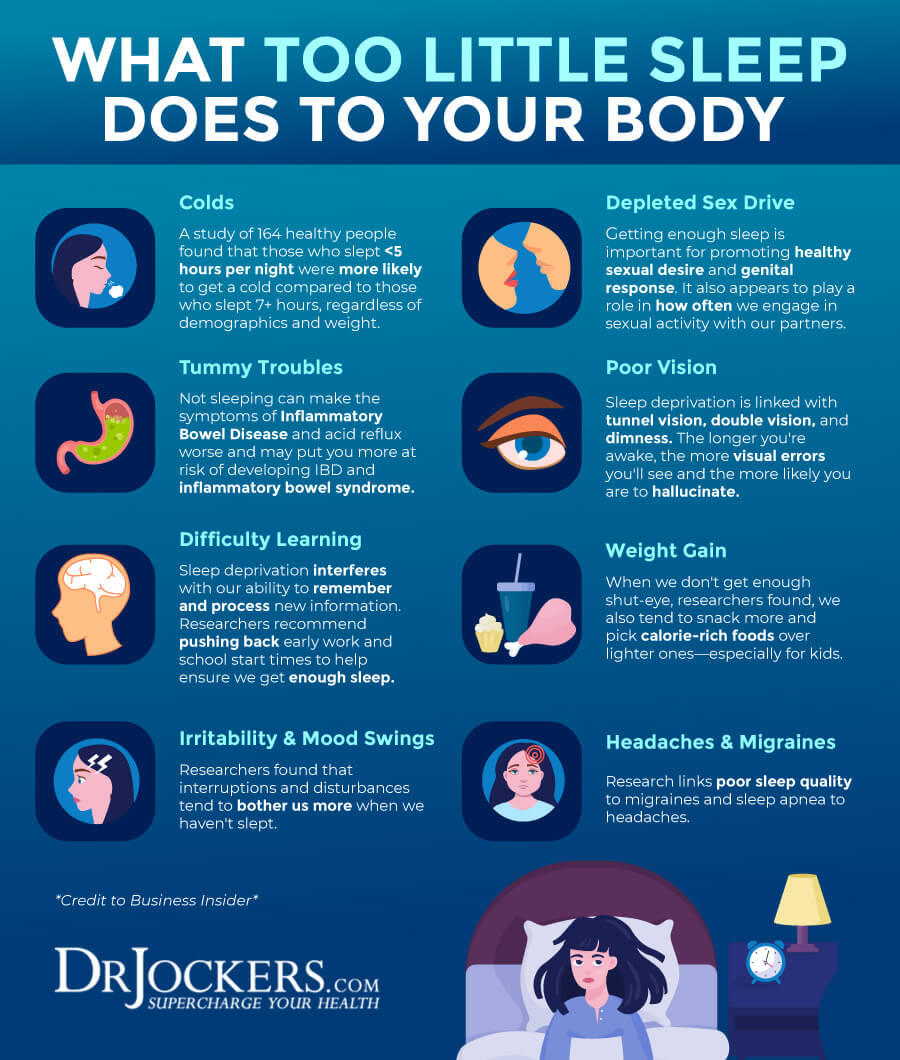
Type 2 Diabetes and Metabolic Syndrome
People with sleep apnea have a higher risk of developing insulin resistance, type 2 diabetes, and metabolic syndrome. Metabolic syndrome is a cluster of conditions including high blood pressure, high blood sugar, unhealthy cholesterol or triglyceride levels, and excess abdominal fat.
While any of these conditions increase your risk of disease, when these symptoms occur together you may have an even higher increased risk of heart disease, stroke, and diabetes.
Liver Problems
People with sleep apnea are more likely to have non-alcoholic fatty liver disease (NAFLD) and abnormal liver function tests. Fatty liver disease occurs when fat builds up in the liver.
Fatty liver disease and poor liver function can negatively affect the liver’s ability to perform its many essential roles in the body, including converting food to fuel, filtering harmful toxins, making proteins that help blood clot, and producing bile.
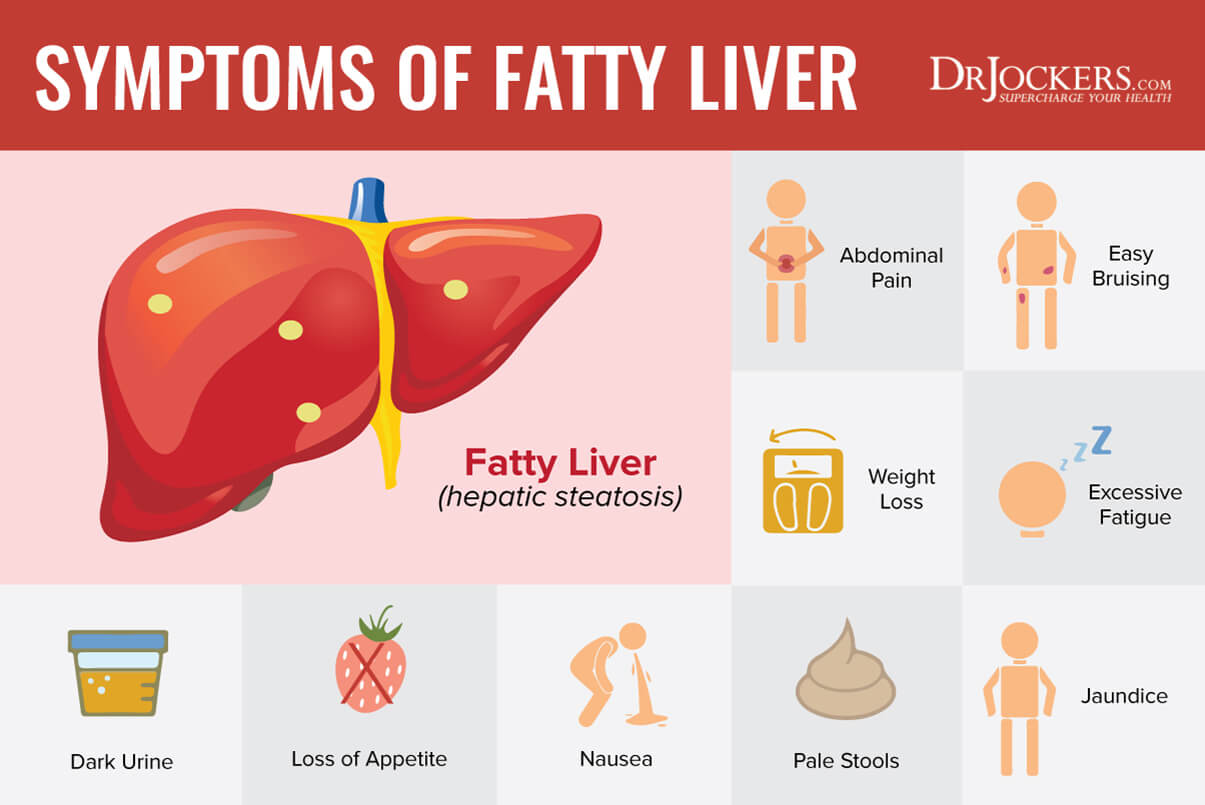
Complications with Medications and Surgery
Having sleep apnea can lead to complications after major surgeries due to breathing problems while sedated on lying on your back.
Sleep apnea is a concern with general anesthesia and certain medications because they depend on physiological balance in the body in order to work properly. A balance that is not present when breathing is consistently interrupted.
Conventional Testing and Treatment Options for Sleep Apnea
Your doctor will likely refer you to a sleep center for overnight monitoring to test for sleep apnea. This overnight test is called polysomnography and it measures brain waves and arousals, eye, leg, and chin movements, airflow, respiratory effort, oxygen levels, electrocardiographic tracings, body position, and snoring. There are also home sleep tests which measure your heart rate, blood oxygen level, airflow and breathing patterns.
Some doctors will recommend lifestyle changes for mild sleep apnea. If it is moderate to severe, your doctor will likely recommend a device to help open the blocked airway or surgery in some cases.
The Continuous Positive Airway Pressure (CPAP) machine is the most common conventional method of treating sleep apnea. The CPAP delivers air pressure through a mask while you sleep. 20-50% of people give up on the CPAP because it can be cumbersome and uncomfortable.
There are other airway pressure devices that can be used if the CPAP is problematic. Oral appliances that keep your airways open are also available.
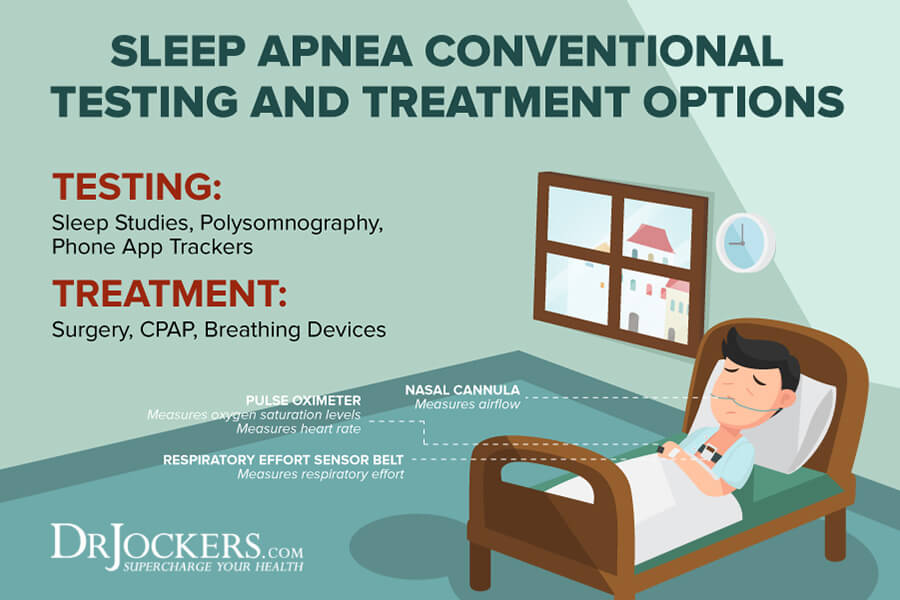
10 Natural Strategies For Optimal Sleep
Sleep apnea is a potentially life-threatening condition. While the following strategies are not FDA approved to prevent, mitigate, treat or cure sleep apnea, they can improve overall sleep quality.
By taking a look at your current lifestyle, it can be pretty simple to identify potential triggers for poor sleep. By addressing factors in your life contributing to sleep apnea, there is a good chance you can get rid of or at least lessen the health impact in has on you.
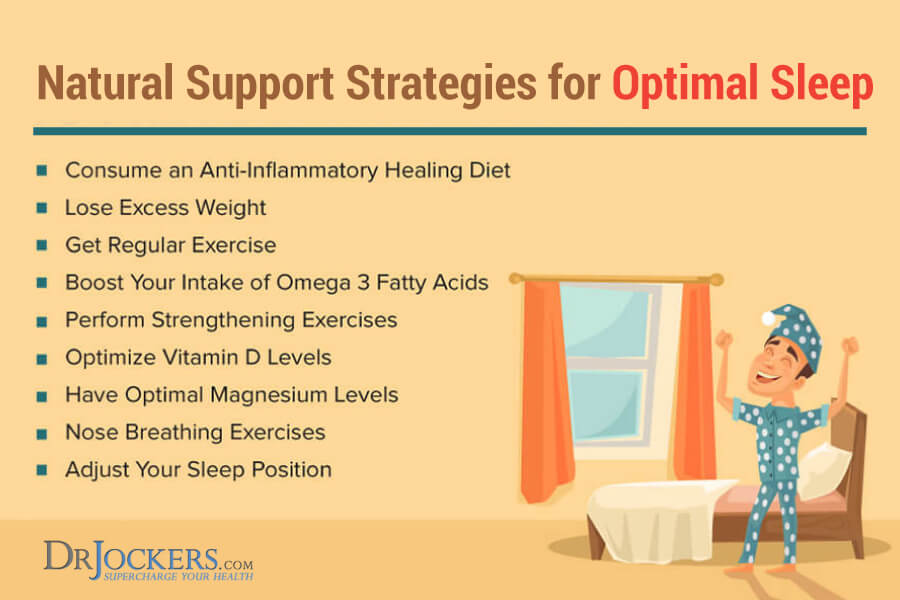
Consume an Anti-Inflammatory Healing Diet
One of the best strategies for preventing or improving sleep apnea is to consume a diet rich in anti-inflammatory foods and eliminate foods that promote inflammation.
Even healthy foods can be inflammatory if you have a sensitivity or intolerance to that food so be sure to remove any foods to which you are sensitive.

Foods to Include
Anti-inflammatory foods are organic, non-GMO, whole, unprocessed foods. Healthy fats, clean protein, and organic vegetables and fruits should all be included.
It is important to only include meat, eggs, and dairy from clean sources. What the animal ate and the conditions in which it was raised affects the nutrient content of these foods. Look for grass-fed, pasture-raised (ideally organic) meats, eggs, and dairy and wild-caught fish such as salmon.
Lower carbohydrate, low glycemic, fruits, vegetables, and herbs are anti-inflammatory and full of nutrients. Excellent vegetables to include are leafy greens, cruciferous vegetables, leeks, shallots, cucumbers, and asparagus. Low glycemic fruits to include are berries, lemons and limes, grapefruit, and granny smith apples.
Healthy fats are an essential part of a healing diet. Healthy fats are found in coconut, olives, avocados, and their oils and in grass-fed butter and ghee. These healthy fats are an efficient source of fuel for the body to combat inflammation and support brain function.

Foods to Remove
It is important to remove foods that cause inflammation. Highly inflammatory foods are refined sugars and grains, and any foods that are easily metabolized into sugar (high glycemic foods). Meat and dairy from conventionally-raised animals, farmed fish, processed foods and highly processed vegetable oils, such as canola, grapeseed, and safflower, should also be eliminated. These foods upregulate inflammation and create extra acidity in the tissues.
It is also important to remove foods to which you have a sensitivity or intolerance. When you consume these foods, your body has an inflammatory response to the food. The most common food sensitivities are to foods like gluten, pasteurized dairy, soy, peanuts, corn, and shellfish. For information on testing for food sensitivities, read this article.

Consume Antioxidant-Rich Vegetables and Fruits
Sleep apnea is associated with oxidative stress (8). Oxidative stress is a process that can trigger cell damage and plays a role in a variety of diseases.
Antioxidants are nutrients that counteract oxidative stress. Studies have found that Increasing your intake of antioxidants can be a helpful strategy for improving sleep apnea and your quality of sleep. In fact, patients who supplemented with the antioxidants vitamin C and vitamin E slept better with more time in deeper stages of sleep and had fewer episodes of sleep apnea (8).
Antioxidants are found in many fruits and vegetables and are also available as dietary supplements. Other than vitamins C and E, antioxidants include beta-carotene, lutein, lycopene, selenium, zinc, and vitamin A. look for colorful fruits and vegetables such as berries, avocado, citrus fruits, spinach, sweet potatoes, kale, and red peppers to name a few.
Supplementing with a high-quality multivitamin/multimineral formula that contains many antioxidants along with other essential vitamins and minerals can be very helpful. It is also wise to get specific micronutrient testing done in order to see if there are any areas where you are deficient.
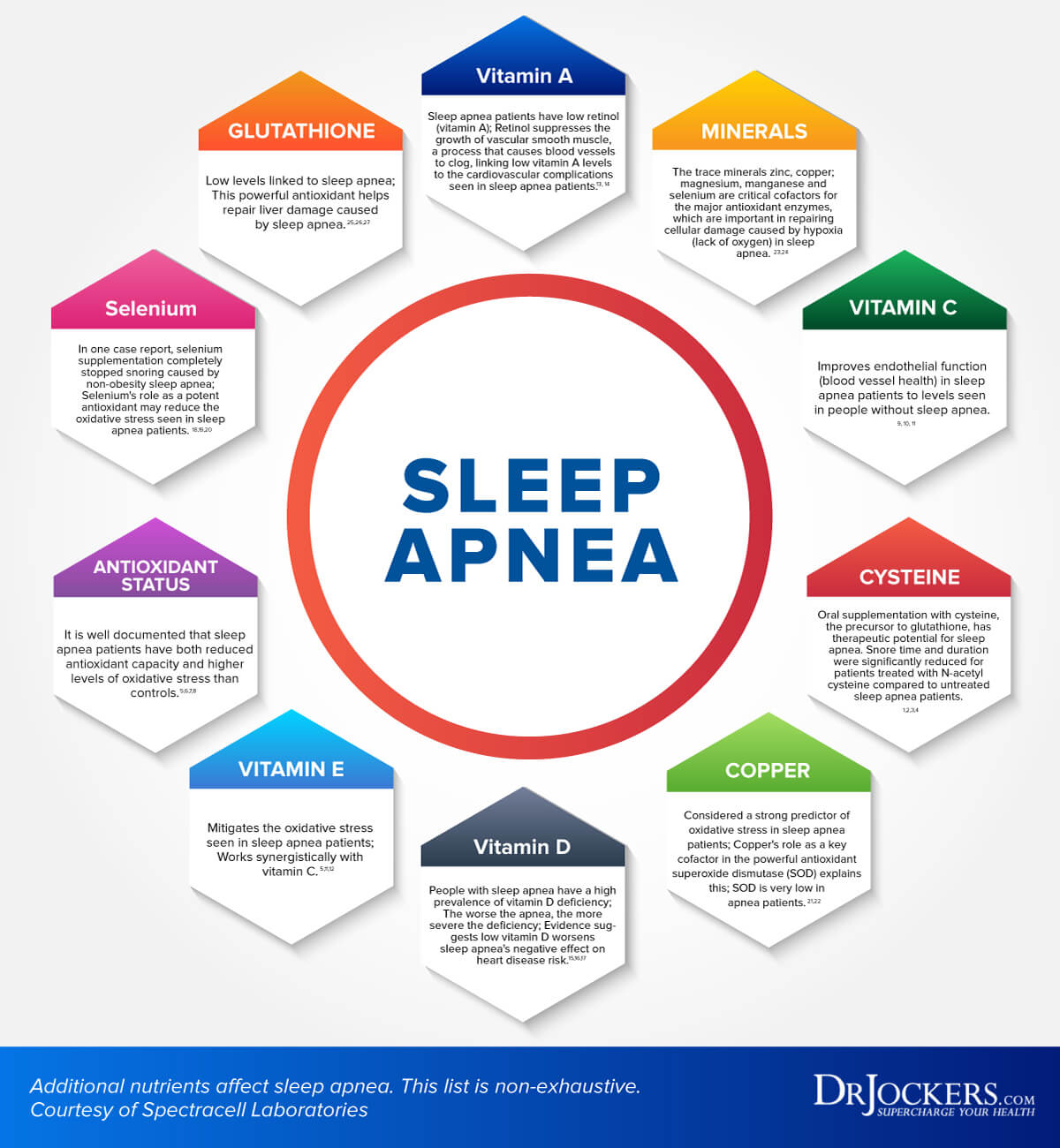
Lose Excess Weight
Around 60-70% of people with obstructive sleep apnea are overweight or obese (9). Weight loss has been shown to be very effective for reducing the symptoms related to sleep apnea. Losing excess weight is a critical strategy for people with obstructive sleep apnea.
There are many weight loss strategies you can use to lose the excess weight. Healing a leaky gut and balancing your gut microbiome are important first steps for weight loss. Following the anti-inflammatory, healing diet outlined above is a powerful way to lose excess weight, reduce inflammation and balance hormones that can contribute to weight gain.
Another great strategy for losing excess weight and burning fat is intermittent fasting. Intermittent fasting is confining your eating window to smaller amounts of time such as only eating from 6 AM to 6 PM. Intermittent fasting can help you burn fat by optimizing insulin sensitivity, down-regulating inflammation, and increasing growth hormone in the body (10). For detailed information on how to practice intermittent fasting, read this article.
You can use cold and hot therapy to lose excess weight. Exposing your body to cold (such as a cold shower) speeds up your metabolism and your body’s ability to burn fat. Sauna therapy can also stimulate fat loss.
Many people are unable to maintain a healthy weight despite exercise and dieting. This may be due to insulin resistance and hormonal imbalances. Weight gain, particularly abdominal fat, is a classic sign of insulin resistance and chronic inflammation. Low levels of vitamin D3 are also associated with cellular inflammation and weight loss resistance (11). These issues must be addressed to lose excess weight.

Get Regular Exercise
Regular exercise is beneficial for preventing and improving sleep apnea. Exercise has many health benefits including increasing your energy level, helping you lose weight, and strengthening your muscles. Performing resistance training and high intensity interval training (HIIT) can help you burn fat, maintain a healthy weight, and improve muscle tone.
HIIT is a short-duration workout that involves rapid burst of exercise incorporating large muscle groups. To perform high intensity exercises, you should do the exercises in sequence, for short time periods with little rest between sets. Incorporate full body movements such as squats and push-ups. HIIT increases fat-burning and anti-aging hormones for the next 36 hours.
Resistance training with your body or weights is a great way to tone and strengthen your muscles. This can help you increase your resting metabolism and burn excess fat.

Boost Your Intake of Omega-3 Fatty Acids
Omega-3 fatty acids are essential fats that your body cannot produce. You must get Omega-3s from dietary and supplement sources. There are three main kinds of omega-3s, DHA, EPA, and ALA. Foods rich in omega-3 fatty acids are fatty fish such as salmon and sardines, nuts (especially walnuts), and seeds such as flaxseeds and chia seeds.
Research shows that diets rich in Omega-3 fatty acids are linked to better quality sleep, falling asleep more quickly, and improved daytime performance. Studies show that supplementing with omega-3 fatty acids may be beneficial for people with obstructive sleep apnea (12).
Omega-3s have wide-ranging health benefits which can impact sleep and sleep apnea. They are an integral component of the membranes that surround our cells and have an intimate role in the body’s hormonal responses. Omega-3s reduce inflammation in the body and may reduce the risk of cardiovascular problems in people with obstructive sleep apnea. Omega-3 fats are also essential for the health of the central nervous system (13).
Plant based omega 3’s such as flax oil only contain the small chain omega 3 called ALA and do not have any DHA. It is very hard for our body to convert ALA into DHA so it is best to get a high quality fish or krill oil that is rich in EPA and DHA. You want to find a brand that is molecularly distilled to take out any heavy metals and other unwanted contaminants.
Be sure to discuss with your physician before using as fish oils have a blood thinning affect and can be contraindicated if you are on blood thinning medications.
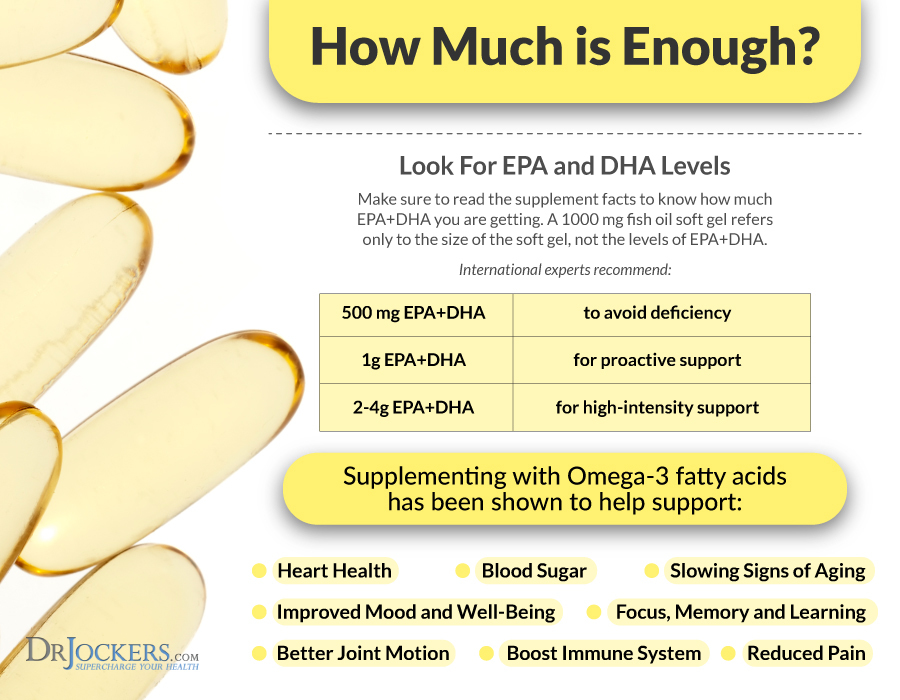
Perform Strengthening Exercises
There are several breathing, mouth and throat exercises you can perform to improve sleep apnea. Regularly playing an instrument called a didgeridoo has been found to be an effective treatment for moderate obstructive sleep apnea (14).
The circular or cyclic breathing technique used to play the didgeridoo trains the upper airways and helps strengthen the pharynx to prevent collapse. Both daytime sleepiness and sleep apnea was shown to improve significantly for people who regularly played as did the sleep quality of their partners.
Oropharyngeal exercises may also help improve sleep apnea. Oropharyngeal exercises are mouth and neck exercises that can strengthen the weak muscles in the neck. One study showed that these exercises significantly reduced the severity and symptoms of obstructive sleep apnea (15).
Practicing yoga can be an excellent for sleep apnea. Yoga’s breathing and stretching techniques can improve sleep apnea and sleep quality by reducing cortisol levels, regulating the nervous system, improving breathing, and alleviating neck stiffness.

Optimize Vitamin D Levels
Low vitamin D levels are linked to obstructive sleep apnea and the activation of numerous inflammatory processes (16). Low levels of vitamin D can contribute and worsen the impact of sleep apnea on glucose metabolism.
Abnormal glucose metabolism is one of the main health issues associated with sleep apnea (17). Supplementing with vitamin D has been shown to improve abnormal glucose metabolism and inflammation in people with sleep apnea.
It is important to optimize your vitamin D level. Optimal vitamin D levels are between 50-80 ng/ml. Sunlight and certain foods can help you increase your vitamin D level. Our bodies produce vitamin D when we are exposed to sunlight. Foods rich in vitamin D include organ meats, wild caught salmon and sardines, and eggs from pasture raised chickens.
It can be difficult to obtain sufficient levels of vitamin D from sunlight and foods. For optimal vitamin D levels, supplementation with a high-quality vitamin D supplement can be extremely beneficial. Look for a vitamin D3 supplement with added vitamin K2 because these vitamins work together.

Have Optimal Magnesium Levels
Ensuring you have healthy levels of magnesium is important improving sleep apnea. Magnesium is an essential macro-mineral that the body needs in large amounts. Low magnesium levels are linked to poor quality sleep (18).
Magnesium plays a crucial role in the body, helping regulate many important functions. These functions include balancing blood sugar, regulating the body’s stress responses system, and relieving physical tension, all of which are essential for quality sleep.
Magnesium helps regulate melatonin levels in the brain, which is necessary for sleep. It also increases GABA (Gamma-Aminobutyric Acid), an inhibitory neurotransmitter which reduces anxiety and promotes relaxation and sleep. Magnesium can relieve and relax the muscles that tighten from sleep apnea.
Many people are deficient in magnesium. The body does not produce magnesium so you must get the magnesium your body needs from foods and/or supplementation. Foods rich in magnesium are dark leafy greens, seeds and nuts, dairy products, and certain vegetables like broccoli.
You can also do Epsom salt baths to support your magnesium levels. It would also be wise to supplement with a good magnesium and B complex supplement. Look for magnesium L-threonate which is the best form of magnesium for crossing the blood brain barrier.

Nose Breathing
Breathing from your nose rather than your mouth as you sleep promotes more restful and better quality sleep. George Catlin was one of the first people to recommend nasal breathing to improve sleep quality and daytime function (19). In his book, “Breath of Life” first published in 1861, Catlin attributed the superior health of the Native Americans to their habit of closed-mouth sleeping.
When we breathe from our noses, this activates the parasympathetic nervous system. The parasympathetic nervous system signals rest, regeneration, healing, and digestion. Nose breathing lowers stress hormones, aids digestion and healing, and promotes relaxation.
Mouth breathing, on the other hand, activates the sympathetic nervous system. The sympathetic nervous system activates our fight or flight response, signaling the production of greater amounts of stress hormones and elevating blood sugar. This can interfere with sleep and contribute to sleep apnea.
Signs that you may be breathing from your mouth at night are bad morning breath, dry mouth/thirst in the morning, and poor oral hygiene issues. Mouth breathers have a greater bacterial load in their mouths which compromises the immune system making you more susceptible to chronic inflammatory conditions.
A simple way to train yourself to breathe from your nose rather than your mouth is to use mouth tape at night. My favorite mouth tape is the Micropore paper tape. For instructions on how to use mouth tape, watch the video below.
Adjust Your Sleep Position
Changing your sleep position can relieve obstructive sleep apnea by improving airflow. Sleeping flat on your back causes the throat to relax and block your airway. Elevating your head and sleeping on your side can prevent relaxed throat muscles from blocking your airway and make breathing easier.
Elevating your head around four inches helps your tongue and jaw move forward during sleeping. You can use a wedge pillow or towels underneath the mattress to elevate the head of the bed.
Likewise, sleeping on your side can also be very helpful. According to one study, participants were twice as likely to have apneic episodes when sleeping on their back than in the side position (20). To maintain the side sleeping position, use a tennis ball taped or sewn to the back of your pajamas or a body pillow.
Use Breathe Right Strips
Congestion can occur when your nasal passages become inflamed allowing less air to pass through. This can be a major contributor to the development of sleep apnea. Breathe Right nasal strips use a combination of gentle but strong adhesive and a unique reflex action to actually physically pull your nasal passage open.
Nasal strips are made of flexible, spring-like bands that fit right above the flare of the nostrils. The underside is adhesive so that once positioned on the nose, they stay there. As the bands attempt to straighten back to their original shape, they lift the sides of the nose and open the nasal passages.
This lifting action helps open inflamed sinus passages and makes it easier to breath. Nose strips provide relief for congestion due to colds, allergies, or a deviated septum and reduce snoring caused by nighttime nasal congestion.
Summary
Sleep apnea is a common condition in which a person’s breathing stops and starts during their sleep. It is linked to obesity, heart disease, stroke, diabetes, depression, and other health conditions. Men and older people are most likely to have sleep apnea.
Of the three types of sleep apnea, obstructive sleep apnea is most common. With obstructive sleep apnea, there is a blockage in the airway causing the apnea. Central sleep apnea is caused by the brain not signaling your muscles to breathe. Complex or combined sleep apnea is a combination of obstructive and central sleep apnea.
Symptoms of this condition include unrefreshing sleep, severe snoring, excessive daytime fatigue and low energy. Morning headaches, waking with a dry mouth, irritability, and difficulty concentrating are also signs of sleep apnea.
Sleep apnea can be life-threatening and has many related complications including high blood pressure, type 2 diabetes, metabolic syndrome, liver problems, and complications with medications or surgery. Fortunately, there are natural strategies for improving sleep quality and overall health.
Consuming an anti-inflammatory, healing diet with antioxidant-rich fruits and vegetables is beneficial. You should remove inflammatory foods including foods to which you may have a sensitivity or intolerance.
Additional strategies to improve sleep quality include losing excess weight, getting regular exercise with resistance training and high intensity intervals, perform strengthening exercises for your mouth, throat, and breathing, practice nose breathing, and change your sleep position from your back to your side.. Certain supplements can help improve sleep quality and they include omega 3 fatty acids, optimize vitamin D and magnesium levels,

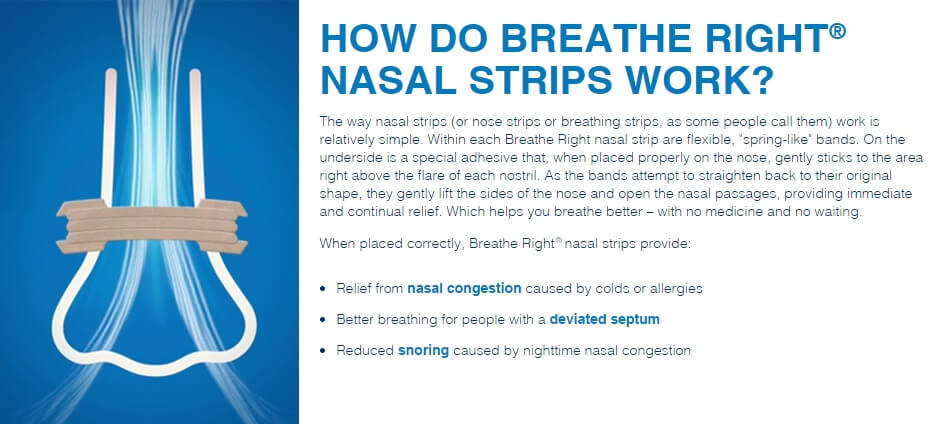



Vit A 10,000IU/Zn and no gluten etc. helped my sleep apnea. Vit A helped my lungs soak in air.
That’s great Shasha!
thank you, I will try a lot of these things. I do some now, but will try more
Great to hear!
I am from UK, I was diagnosed of (COPD) in 2018 and I have tried all possible means to get cured, i even visited pulmonologist but all to no avail, until i saw a post in a health forum about a herbal doctor from Africa who prepare herbal medicine to cure all kind of diseases including COPD, at first i doubted if it was real but decided to give it a try, when i contacted this herbal doctor via email the clinic sent me the COPD herbal medicine through courier service, when i received this herbal medicine, Dr Hassan gave me step by instructions on how to apply it, when i applied it as instructed i was totally cured of this deadly disease within 15 weeks of usage, if you are suffering of this diseases you can as well Contact this great herbal doctor via his email solutionsherbalclinic gmail com or visit their website at ww w solutionhealthherbalclinic com